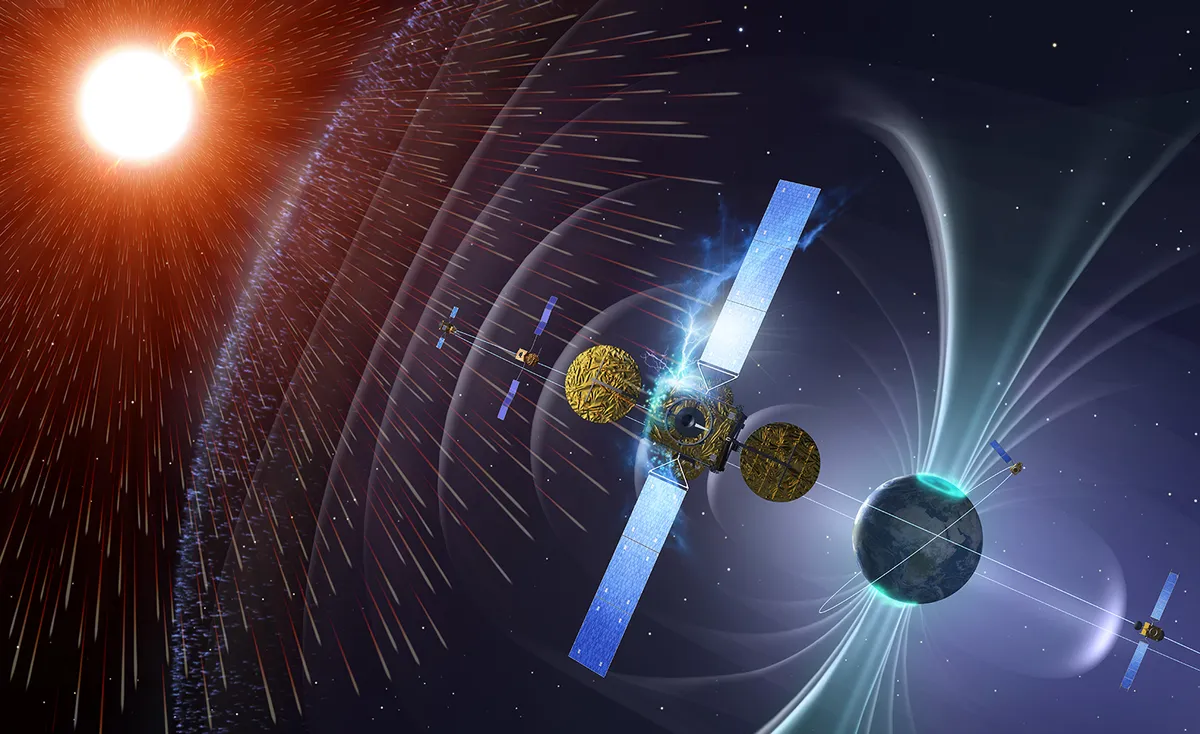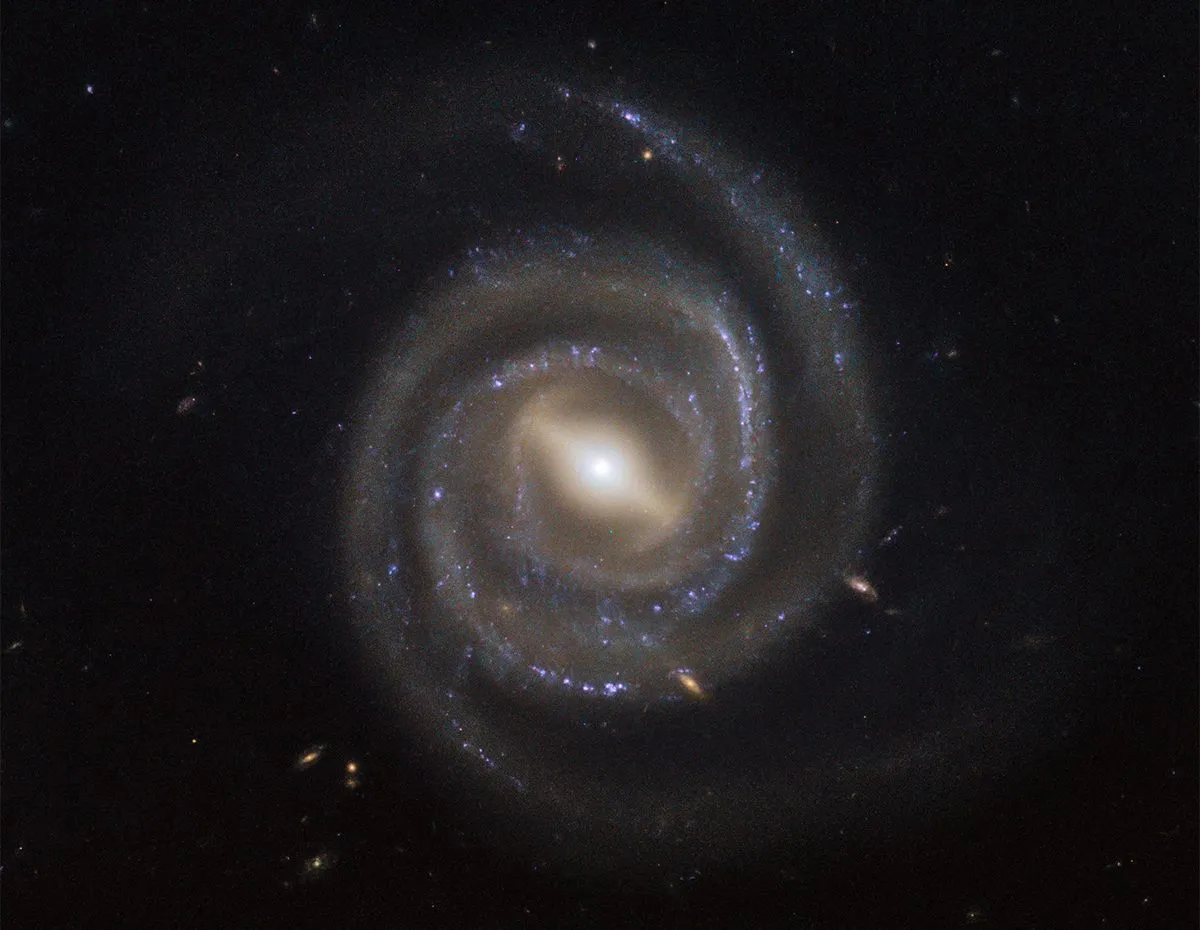Like a metal roof being struck during a heavy hailstorm, Earth is under constant bombardment by energetic subatomic particles from outer space, known as cosmic rays.
Cosmic rays travel at almost the speed of light, pack more energy than terrestrial particle laboratories can ever achieve, and their origin is largely unknown.
Studying cosmic rays is an active field of research and a prime example of the meeting-point between astronomy and particle physics.

Discovery
Cosmic rays were discovered way back in 1912 by Austrian physicist Victor Hess.
Hess wanted to know why air molecules become ionised: how over time some oxygen and nitrogen atoms lose one or more of their electrons, leaving them with an electrical charge.
At first, scientists thought natural radioactivity from terrestrial rocks was the culprit, but balloon experiments by Hess revealed the ionisation source had to be extraterrestrial.
It took over two decades for scientists to understand the nature of cosmic rays.
The term was coined by merican physicist Robert Millikan, who believed them to be high-energy photons, a form of light.
But experiments by his younger colleague Arthur Compton and other researchers revealed that the ‘rays’ are influenced by Earth’s magnetic field, indicating they consist of electrically charged particles.

Where do cosmic rays come from?
We now know that some 90% of cosmic rays are protons (positively charged nuclei of hydrogen atoms), just under 9% are helium nuclei and about 1% are negatively charged electrons.
When these energetic ‘primary’ cosmic rays smash into the upper layers of our atmosphere, they produce a cascade of lower-energy secondary particles (a so-called ‘air shower’) that can be detected by instruments on the ground (or in a balloon).
So where do these high-energy particles originate from?
For decades, astronomers suspected that powerful supernova explosions were the major source of cosmic rays.
In the aftermath of such a titanic stellar explosion, particles could apparently be accelerated to close to the speed of light.
In 2013, NASA’s Fermi Space Telescope confirmed the role of supernovae in cosmic rays.

However, they can only explain part of the spectrum of cosmic rays; the most extreme particles likely arrive from beyond our Milky Way Galaxy.
In particular, so-called ultra-high-energy cosmic rays (UHECRs) may be produced in active galactic nuclei, powered by supermassive black holes.
One record-breaking example was the Oh-My-God particle.
It generated a massive air shower in October 1991 above the HiRes detector array in Utah.
The Oh-My-God particle packed more energy all in one proton than a baseball travelling at 100km/h!
Physicists calculated it must have been travelling at almost the speed of light, just 1,000-billion-billionth of a per cent away from breaking the cosmic speed limit.

Detecting cosmic rays
Because of their electrical charge, the paths of cosmic rays are bent by magnetic fields in our Milky Way.
That makes it hard, if not impossible, to trace back their origins.
For UHECRs, the bending effect is smaller, and there are now many indications that they are produced in active galaxies.
Surprisingly, remote quasars (active galaxies billions of lightyears away) don’t fit the bill, as UHECRs cannot travel across such extremely vast distances.
All across the world, ingenious detector arrays keep an eye on the sky in the hope of solving the puzzle.
Some, like the giant Pierre Auger Observatory in Argentina, catch the secondary particles in an air shower directly.

Others, like the High Energy Stereoscopic System observatory in Namibia and the future Cherenkov Telescope Array Observatory (with instruments in Chile and on the Spanish island of La Palma), register faint flashes of light in the atmosphere, caused by traversing particles.
More than a century after Victor Hess’s pioneering balloon flights, cosmic rays still haven’t revealed all their secrets.
But eventually they should provide astronomers with valuable information about the most energetic processes in the Universe.

How Earth is affected
You would expect that extremely energetic particles are hard to stop, but no.
If a high-energy proton or electron collides with an atomic nucleus in Earth’s atmosphere (or in interstellar space), the collision energy is converted into a whole load of lower-energy particles.
That’s why primary cosmic rays don’t reach our planet’s surface.
But even in the vacuum of intergalactic space, the most energetic particles cannot propagate forever.
If they carry an energy of about 50 billion gigaelectron volts (or 8 joules), they start to interact with the omnipresent low-energy photons of the cosmic microwave background – the ‘afterglow’ of the Big Bang.
As a result, they decay into particles with much lower energy.
This ‘GZK cutoff’ (after the discoverers Kenneth Greisen, Georgiy Zatsepin and Vadim Kuzmin) implies that ultra-high-energy cosmic rays (UHECRs) impacting our atmosphere cannot have travelled for more than 200 million lightyears or so.
Apparently, the highest-energy cosmic rays must originate relatively nearby.
This article appeared in the June 2024 issue of BBC Sky at Night Magazine

